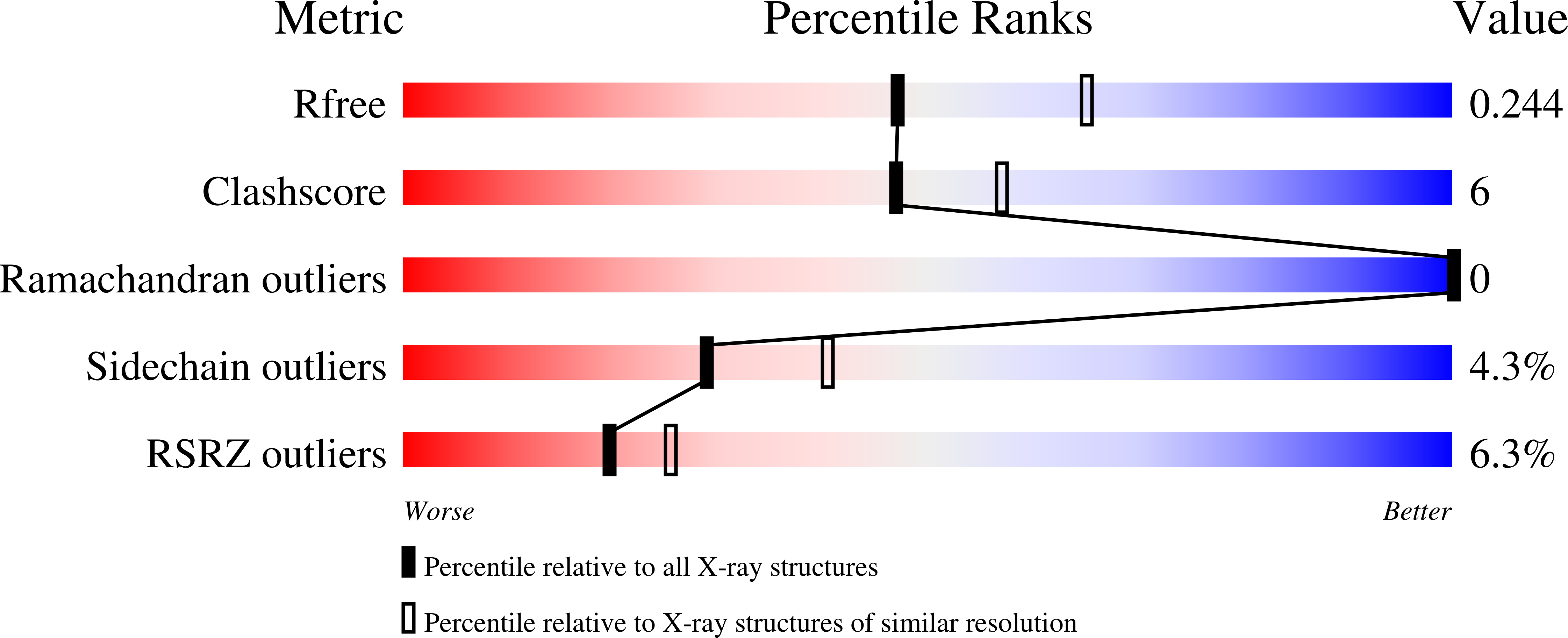Direct observation of structurally encoded metal discrimination and ether bond formation in a heterodinuclear metalloprotein
Griese, J.J., Roos, K., Cox, N., Shafaat, H.S., Branca, R.M.M., Lehtio, J., Graslund, A., Lubitz, W., Siegbahn, P.E.M., Hogbom, M.(2013) Proc Natl Acad Sci U S A 110: 17189-17194
- PubMed: 24101498
- DOI: https://doi.org/10.1073/pnas.1304368110
- Primary Citation of Related Structures:
4HR0, 4HR4, 4HR5 - PubMed Abstract:
Although metallocofactors are ubiquitous in enzyme catalysis, how metal binding specificity arises remains poorly understood, especially in the case of metals with similar primary ligand preferences such as manganese and iron. The biochemical selection of manganese over iron presents a particularly intricate problem because manganese is generally present in cells at a lower concentration than iron, while also having a lower predicted complex stability according to the Irving-Williams series (Mn(II) < Fe(II) < Ni(II) < Co(II) < Cu(II) > Zn(II)). Here we show that a heterodinuclear Mn/Fe cofactor with the same primary protein ligands in both metal sites self-assembles from Mn(II) and Fe(II) in vitro, thus diverging from the Irving-Williams series without requiring auxiliary factors such as metallochaperones. Crystallographic, spectroscopic, and computational data demonstrate that one of the two metal sites preferentially binds Fe(II) over Mn(II) as expected, whereas the other site is nonspecific, binding equal amounts of both metals in the absence of oxygen. Oxygen exposure results in further accumulation of the Mn/Fe cofactor, indicating that cofactor assembly is at least a two-step process governed by both the intrinsic metal specificity of the protein scaffold and additional effects exerted during oxygen binding or activation. We further show that the mixed-metal cofactor catalyzes a two-electron oxidation of the protein scaffold, yielding a tyrosine-valine ether cross-link. Theoretical modeling of the reaction by density functional theory suggests a multistep mechanism including a valyl radical intermediate.
Organizational Affiliation:
Stockholm Center for Biomembrane Research, Department of Biochemistry and Biophysics and Department of Physics, Stockholm University, SE-106 91 Stockholm, Sweden.

















